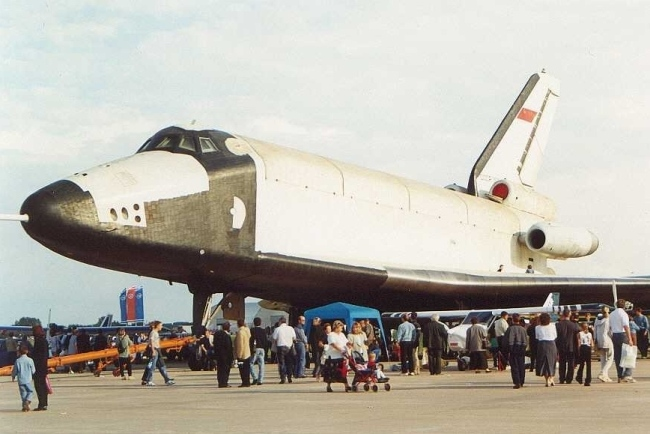«Biser-4» (SH16M), the Buran's digital on-board computer
✔ Developed by the Pilyugin Center NPTsAP (Moscow), it had the structure of the American IBM 360 computer.
✔ Eight of these computers were planned to be used on the Buran, forming two identical computer systems of four synchronized computers each (Central System and Peripheral System). On the first (and last Buran flight) only four Biser-4 computers were used. These computers provided redundancy to all Buran control operations, and were synchronized by hardware. The computer system had a single quartz oscillator that supplies all eight Biser-4 computers with a single sequence of clock pulses with a frequency of 4 MHz and an interrupt period of 32.8 ms. Since the reference oscillator also had to meet the requirement of “reliable operation under two faults”, it had five redundancy channels, and at the output of which the “three out of five” voting scheme was installed.
✔ The Buran computer system had three magnetic tape memory units (MMUs) with a capacity of 819 KB (32-bit words) each for storing software and loading it into the computers' RAMs during flight. In addition to the onboard programs, the MMUs could also store information useful for the onboard displays used during manned flights. To ensure reliability, the information for each ML was duplicated.
Main characteristics:
Frequency, MHz . . . . . . . . . . . . . . . . . . . . . . . . . . . . 4
Processor name. . . . . . . . . . . . . . . . . . . . . . . . . . . . 582 IK1 Series
Number of I/O processors . . . . . . . . . . . . . . . . . . . 4
Form of number representation . . . . . . . . . . . . . . . Fixed comma
Bit depth, bits:
commands . . . . . . . . . . . . . . . . . . . . . . . . . . . . . . . 16, 32
operands . . . . . . . . . . . . . . . . . . . . . . . . . . . . . . . . . 8, 16, 32, 64
Short operation execution time
(in RR and RX formats), µs . . . . . . . . . . . . . . . . . . . 1
Computing performance, op/s . . . . . . . . . . . . . . . . 370.000
RAM capacity, KB . . . . . . . . . . . . . . . . . . . . . . . . . . . 512
ROM capacity, KB . . . . . . . . . . . . . . . . . . . . . . . . . . . 64
RAM semiconductor name . . . . . . . . . . . . .. . . . . . . 537RU9 Series
ROM semiconductor name . . . . . . . . . . . . .. . . . . . . 556RT7 Series
Name of other semiconductor elements . . . . . . . . 134, 106, 533,1533 TTL Series
Number of galvanically isolated serial interface
communication lines for connection
of exchange controllers . . . . . . . . . . . . . . . .. . . . . . . 21
Throughput capacity of the I/O system, Kbaud . . . 1000
Real time duty cycle, ms . . . . . . . . . . . . . . . . . . . . . . 32
Supply Voltage, V . . . . . . . . . . . . . . . . . . . . . . . . . . . . 23-34
Operating temperature range, °С . . . . . . . . . . . . .. . -10...+50
Power consumption, W . . . . . . . . . . . . . . . . . . . . . . . 240
Dimensions, mm . . . . . . . . . . . . . . . . . . . . . . . . . . . . 660×240×310
Weight, kg . . . . . . . . . . . . . . . . . . . . . . . . . . . . . . . . . . 33,6




www.drewexmachina.com





 www.facebook.com
www.facebook.com

www.facebook.com
